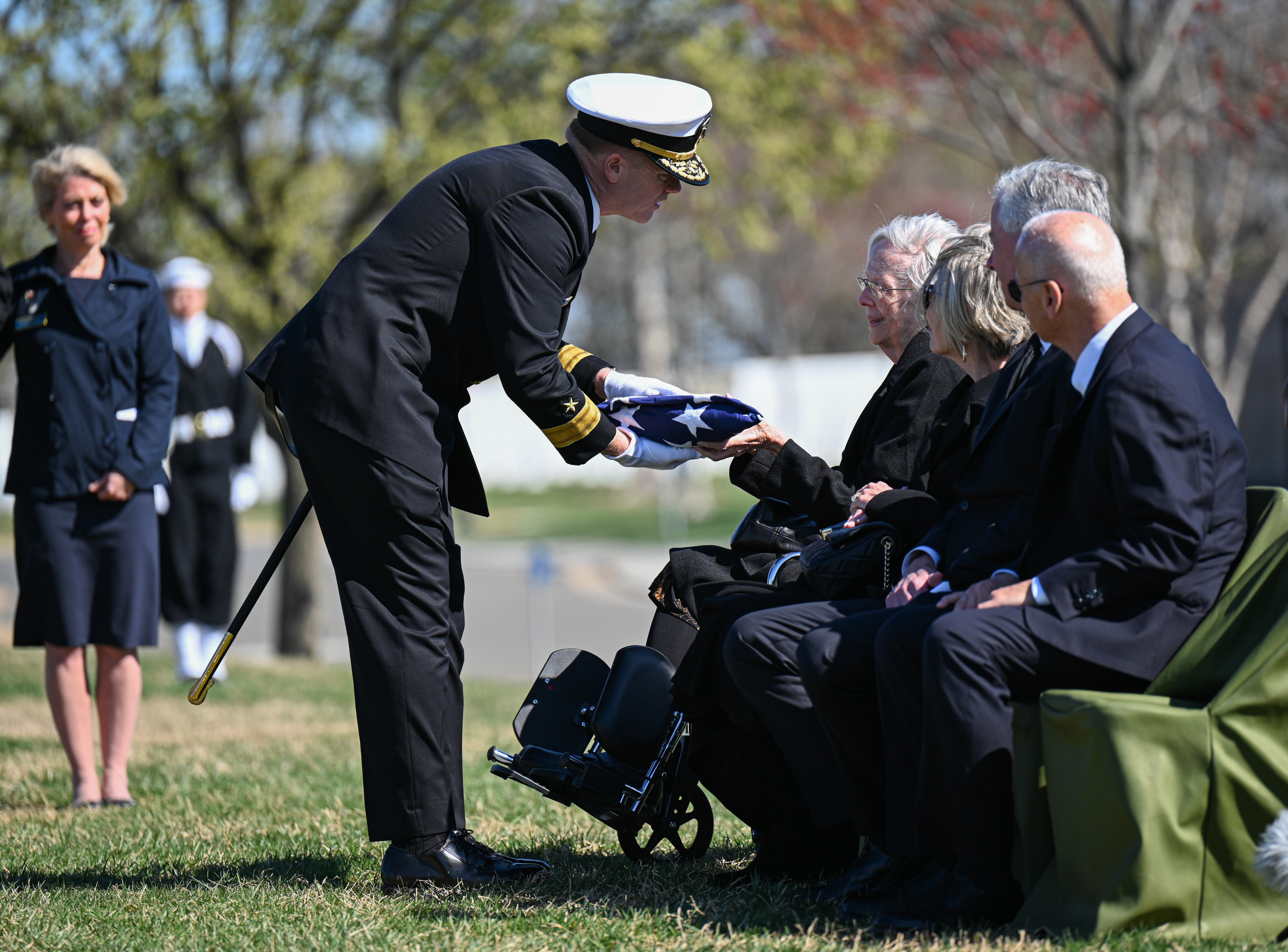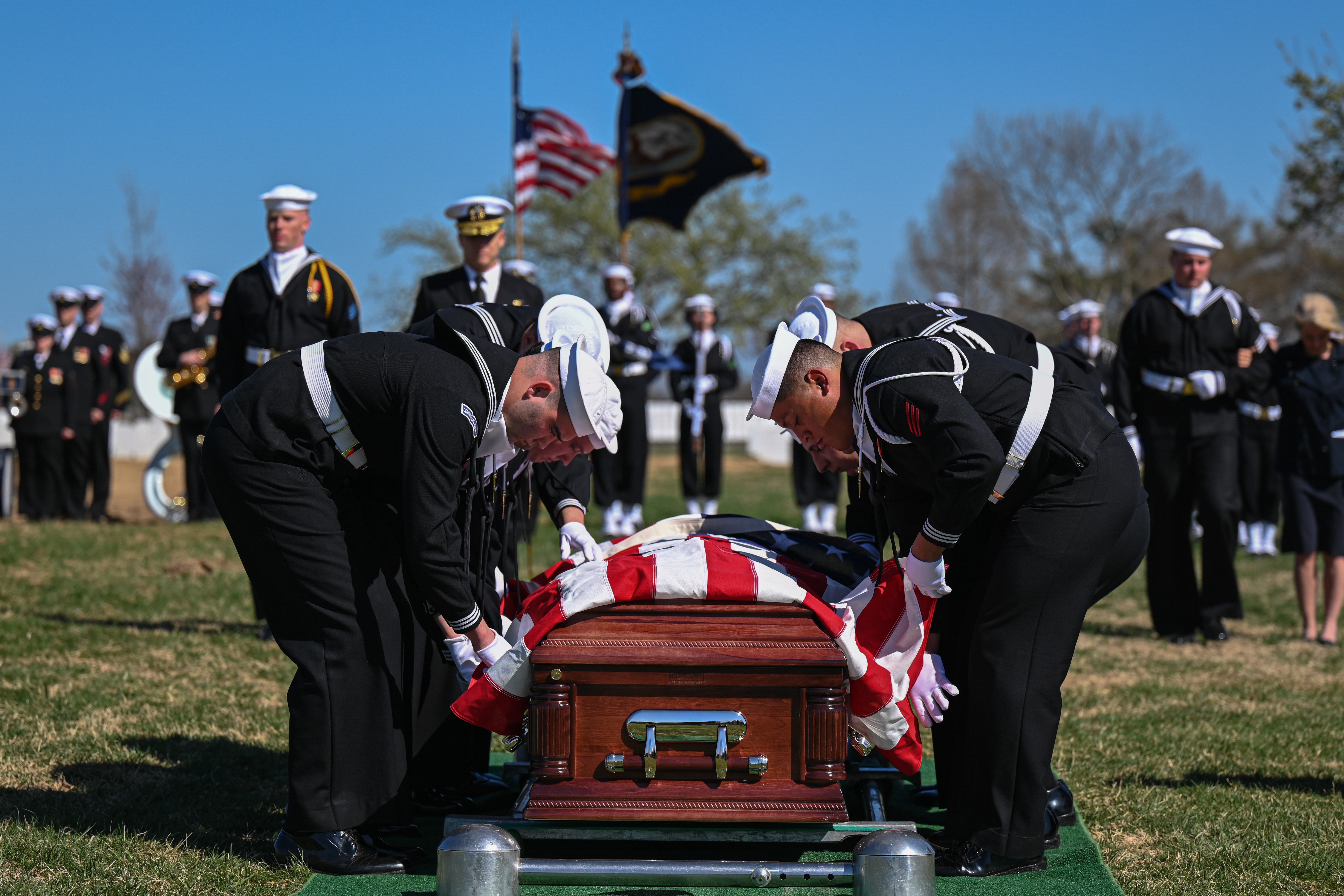
On a windy day at Arlington National Cemetery, Virginia Harbison looked over the casket of her late father, U.S. Navy Chief Warrant Officer John Connolly, at his burial—not a common experience for a woman in her 90s. She was only eight years old on Dec. 7, 1941, when the Nevada-class battleship USS Oklahoma, moored in the waters of Pearl Harbor, was struck by torpedoes and capsized, killing her father and 428 other sailors and Marines. A native of Savannah, Georgia, Connolly joined the Navy in 1912 in Boston and served in World War I. Promoted through the ranks, eventually reaching that of chief warrant officer, he was three weeks away from retiring when the torpedoes struck.
Harbison recalled that when growing up in Long Beach, California, her father “was often away, on duty. I do not remember much about him. Except knowing his presence was no longer in the house.” This sentiment has been echoed by countless children of deployed service members. Chief Warrant Officer Connolly gave the ultimate sacrifice: his daughter, her face now adorned with silver hair, sacrificed a life with her father.
Over eight decades had passed since Connolly’s death aboard the USS Oklahoma when Harbison’s son, William Ingram, received a phone call from the Defense POW/MIA Accounting Agency (DPAA). A DNA match had enabled the remains of his grandfather to be identified. “When they recovered the remains… they buried them in a common grave at the Punchbowl. About ten years ago, I learned this from the Navy,” Ingram said.
The “Punchbowl," nicknamed for its shape, is the National Memorial Cemetery of the Pacific in Hawaii, where many service members who died at Pearl Harbor were originally interred. The carnage that day was so immense that remains were nearly impossible to identify. Only 35 individuals from the Oklahoma were identified; the rest were buried in commingled graves and labeled as “unknowns.” In 2015, DPAA initiated the “USS Oklahoma Project” to exhume remains of sailors and Marines, test their DNA and find their next of kin.
Typically, next of kin identified for those who died at Pearl Harbor—84 years ago—are distant family members who hardly knew their relative, if at all. For those who attended Connolly’s funeral service, watching a child of a repatriated service member accept the triangular burial flag was an extraordinary experience.
When asked about others’ memories of Connolly, Harbison shared a story passed down by her mother. Many years after the attack on Pearl Harbor, a gentleman rang their doorbell. He was a survivor of the torpedo strike on the Oklahoma. He recalled that after the ship capsized, Connolly and a chaplain on board unscrewed a porthole cover, allowing other men to climb through. Yet Connolly and the chaplain were unable to make it out themselves. “Your husband saved my life,” the young man told Harbison’s mother.
After eight decades, Connolly’s remains are finally memorialized in a location central to all of his descendants, at Arlington National Cemetery.

Photos by Sgt. Ashleigh Maxwell, Defense POW/MIA Accounting Agency
► Explore our Education Program materials to learn more about those who served and sacrificed during World War II.